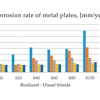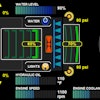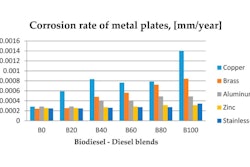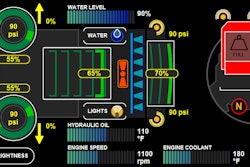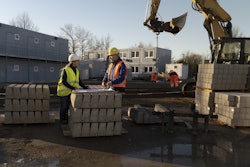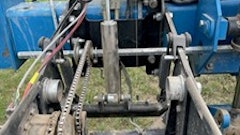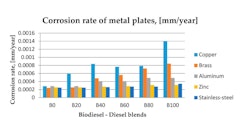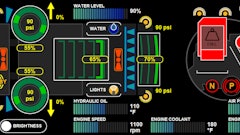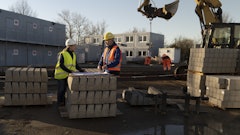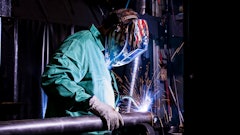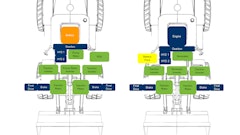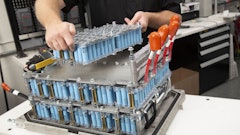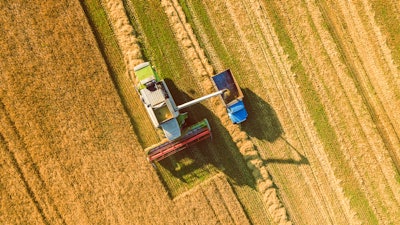
The U.S. economy survived a volatile first half of 2025 facing a stagflation-like environment: sluggish economic growth, sticky inflation, elevated interest rates, weak industrial activity and excess inventories in virtually all industrial markets. On April 2, 2025, the Trump administration unveiled seismic potential changes to U.S. trading policy causing significant uncertainty and confusion from policy shocks. Companies have had to deal with unfolding reciprocal trade policies likely to impact virtually all end-market forecasts, as well as strategic manufacturing and pricing decisions. Further confusion was generated from the difficulty surrounding the enactment of the One Big Beautiful Bill Act and its impact on taxation and spending, harsher immigration policies and softening manufacturing activity worldwide.
The U.S. economy proved resilient as it weathered these economic and policy storms. The U.S. Bureau of Economic Analysis (BEA) reported the first half 2025 gross domestic product (GDP) grew about 1.25%:
- -0.5% in Q1 2025
- +3.0% in Q2 2025
Most of the volatility was due to fluctuations in imports with a massive surge in Q1 2025 reflecting potential new tariff fears, and the second quarter dramatic decline in imports as those fears began to subside.
More importantly, the policy related skepticism and fear began to subside as the following occurred:
- The One Big Beautiful Bill Act was passed and signed into law on July 4, 2025. Besides extending the Trump tax cuts, the bill included many investment stimulating incentives for production, research and development (R&D) spending and accelerated factory depreciation.
- Trade policy began to settle in, and the results and impact did not appear to be as difficult as some feared. Currently, it looks as if the U.S. tariff rate will rise from a previous 3% to about 17% to 20%. The U.S. still lacks trade deals with significant countries, especially China.
- To date, the inflation effect appears to be somewhat muted, but it is still too early to tell. Companies are likely using strong profit margins and inventories to buffer pricing, as well as pressuring suppliers for better deals. It is still a challenging decision as to whether, or how much, to raise prices.
- There is a rising consensus that the price impact of tariffs will be a one-time increase in price levels. It is important to note that the tariff regime is an ongoing negotiation; changes can appear or disappear with little warning.
During this turmoil, the off-highway market's six-month 2025 results were in line with expectations: unit sales were weak and companies focused on liquidating inventory often with significant financial discounts. Operating results were modestly improved by three factors:
- More favorable foreign exchange rates (influence by a weaker dollar)
- Lower than expected manufacturing costs as inflation was moderate
- Somewhat better demand overseas
The uncertainty of the first half has led many companies to adopt a wait-and-see attitude, most visible in the construction industry. Companies appear to be cautious, but optimistic for the second half of the year and into 2026. The underlying hope is for the off-highway sector to bottom near the middle of 2025 and muddle through into 2026 waiting for industry fundamentals to improve.
Consequently, projections of industry volume for off-highway equipment in 2025 are essentially unchanged, but tariffs will likely weaken reported results. Construction equipment is still projected to be down 5% to 10%; farm/large tractors and combines down 25% to 35%; and mining equipment about flat to down 10%. Construction and mining fundamentals may show some improvement the latter part of this year and into 2026, but the farm sector outlook looks grim if the just-announced record U.S. crops in the current growing year turns out to be true.
Construction Equipment: Optimism Is Building for 2026
Construction equipment demand followed the expected softness in the first half of 2025. Volume declined in the mid double-digits in the U.S. as most of the industry worked on reducing the inventory glut that has existed since mid 2024. Helping sales were significant marketing incentives. For example, Caterpillar’s reported pricing in the construction industries segment was down almost 7% in Q2 2025; Deere quarterly price decline was about 5%.
The first half of 2025 saw a rise in construction projects abandonments, and delays attributed to cost escalation, unfolding tariff policies and high financing costs. Fluor, for example, saw a 13% drop in backlog to $28.2 billion in its June quarter. About 80% of the members of the Associated Builders and Contractors reported receiving supplier notices of higher prices. This is likely hampering overall construction spending levels, which was down again in June 2025 for the sixth time in seven months.
The good news is that it appears that June was the peak of softness in construction activity. Continued strength in public construction and the ongoing data center surge continue to help offset some of the strain in construction. Construction Connect indicated that the pace of abandonments and delays eased in July while construction freezes and cancellations plummeted.
Further, as the tariff policy of the U.S. began to settle in, the Dodge Momentum index (DMI) which measures nonresidential projects entering the planning stage, soared 20.8% in July. The DMI usually leads actual construction spending by up to a year. While companies are still cautious, there is clear optimism building if policy uncertainty continues to subside.
Construction equipment demand in 2025 is still expected to see flat to a negative volume decline of about -10%. A lot depends on desired inventory at the end of the year. With easy comparisons, there is a growing belief among companies that their dealers will build some inventory, particularly in the fourth quarter. Reported operating numbers will be better, likely helped by favorable foreign currency, a weak dollar, somewhat lower manufacturing costs and favorable price comparisons. Report results, however, will then be reduced by tariffs, which will be much greater impact in the second half of 2025.
Farm Equipment: Sector Shocked by Record Crop Forecasts
The farm equipment sector was expected to be in its third year of decline since its 2022 peak. With virtually all key industry fundamentals still negative — weakening commodity prices, elevated interest rates, volatility in acreage — farm equipment manufacturers continued to expect a very weak first half of 2025, with production down dramatically (particularly in North America) to reduce bloated new and used inventories.
First-half results followed the expected weakness: there were double-digit decline in volume; operating profits cut in half; and significant double-digit decline in production hours. Reported results were somewhat better reflecting more favorable foreign exchange, a weaker dollar and improved manufacturing costs and somewhat better than expected sales in Europe.
Unfortunately, new and used inventory levels remained extremely elevated. Manufacturers were very late in anticipating and adjusting to the magnitude and length of the demand decline that began three years ago, and their sluggishness in reducing production led to ballooning inventories especially for used equipment: both Tractor Zoom and Machinery Pete report substantial price declines (18% to 23% from 2023-2024 levels) due to excess supply of used equipment and even weaker pricing at auctions.
As excess supply begins to shrink, equipment prices are starting to stabilize this summer. The Purdue University Farmer Sentiment Index has shown modest improvement during the first half of 2025, reflecting a more optimistic outlook for exports due to trade deals opening new markets, and farmers having a less negative view on how tariffs will impact income.
Recently, the farmer sentiment index has begun to weaken. While government payments were expected to make the farmer whole with respect to income in 2025, recent crop conditions have translated into a fear that farm income may be materially weaker than expected due to lower commodity prices. This was confirmed by the unexpected shock of the U.S. Department of Agriculture's (USDA) World Agricultural Supply and Demand Estimates (WASDE) report, which projects much larger record crops this growing season. This would be a major negative indicator for farmer capital investment in the second half of 2025 and into 2026.
The bottom line is that it looks like the farm equipment sector is bottoming at or just below its current 85% level of normal demand. Industry fundamentals are turning negative, and inventories (particularly in North America) are still elevated. For example, AGCO has indicated that its North American inventories are at about nine months, with a target of about six months, suggesting possible production cuts up to 30% to 50% in the second half of the year. Deere appears to be much closer to target inventories of new large farm equipment, but still has a used inventory issue to solve.
The volume forecasts for 2025 are essentially unchanged: down 25% to 35% for large tractors and combines; a decline of 5% to 15% for small tractors, and flat to down 10% globally. The upcoming record U.S. crops may drive some modest select buying to handle the increased crop sizes.
2026 volume improvement is directly related to ending levels of inventory compared to targeted levels. The surprise shock to the agricultural markets of record North American crops discussed below suggests that any material fundamental improvement may have been postponed well into 2026 or 2027. Weather and the resolution of the tariffs program are the key variables to pay attention to in the coming year.
Mining Equipment: Tariffs Contribute to Pause in Demand
The mining sector has seen a softening of capital expenditures continue into 2025. The softness reflects somewhat elevated inventories, a slowing of project development worldwide, elevated interest rates, uncertain green energy policy especially for electric vehicles, and continued tariff chaos.
First half 2025 sales were down low to mid single-digits and inventories were rebalanced. Both Caterpillar and Komatsu have indicated that they are at about desired levels as we enter the second half of the year. Capex in the mining sector is focused on supporting domestic supply chain, critical materials for national security, cost savings and improving efficiencies including automation.
As in construction and farm equipment, the unfolding U.S. tariff regime has also created a new level of uncertainty. The U.S. has recently increased its tariffs on steel and aluminum imports to 50% (under Section 232 of the Trade Expansion Act of 1962) for all countries except the UK which is at 25%. Recently, the U.S. added imported copper to the list, though there are numerous exemptions.
Mining projects and spending in 2025 appear to be moving sideways; equipment demand is expected to be about flat to down 10% before any impact of tariffs. The near-term key is the resolution of U.S. trade policies. The U.S. needs more capacity in most mining materials (especially rare-earth minerals), suggesting a bright future for the mining sector.
August 2025 WASDE: Unexpected Shock for the Farm Sector
The farm equipment sector is in its third year of decline since its 2022 peak, reflecting continued weak fundamentals. Most significant has been declining commodity prices impacting farm income. There has been rising hope that the industry would approach its bottom this year, setting the stage for a recovery when fundamentals improve.
The WASDE report, released August 12, forecast record crops this year based on dramatically higher yields. If true, farmers will be faced with unexpectedly large crops and possibly sharply lower commodity prices which would materially impact farmer income. This could delay any improvement in the farm equipment sector into 2027 at the earliest without an event to soften the impact of the huge crop.
The key crop forecast change was in corn, where the August WASDE projected a record yield of 188.8 bushels, well above trade guesses and 9.5 bushels above last year. WASDE also raised the projected harvested acres by 5.8 million acres over last year increasing the projected corn production to 16.742 billion bushels, or 1.9 billion more than the 14.867 billion bushels produced last year and 1 billion bushels higher than the July 2025 forecast.
The August projection raised the corn carryover to 2.117 billion bushels. It would have been worse had the forecast for usage not been increased by 500 million bushels, a number that is questioned by some industry publications like AgWeb. The corn price was projected to fall to $3.90 from $4.20. History indicates that a carryover more than 2 billion bushels leads to sub $4 corn and unprofitable farmers.
The WASDE also estimated a record soybean yield at 53.6 bushels, up 1.1 bushels from July and 2.9 bushels above the 50.7. bushel yield last year. Harvested acres of 80.1 million were 2.4 million lower than July and 2.6 million below last year, reducing production by 43 million bushels to 4.292 billion from July and 48 million less than the 4.34 billion last year. Ending stocks dropped modestly to 290 million from 330 million, resulting in a slight questionable increase in projected prices for soybeans to $10.10 compared to an estimated $10 last year. A soybean carryout below 300 million bushels would normally strengthen prices, but the USDA is probably recognizing that the forecast for soybean exports is likely overstated as China has not bought anything significant yet from the U.S.
The question is whether the new record crop projections can be believed. WASDE has, in the past, overestimated the crop forecasts in August; the corn data is based on satellite images and farmer surveys, and not field data. While the current record crop projections may be overstated, it does provide evidence that a huge if not record crops yields are likely this year, unless we have a weather event.
The news from the USDA is a major negative for the outlook for farm equipment demand. Farmers are also facing significant pressure on input costs like fertilizers and the lack of a new Farm Bill from Congress, which is likely postponed until 2026. The net effect would be to push out any material improvement in farm equipment demand past 2026 and into 2027.
The farm sector needs an event to stabilize and begin to improve demand for equipment. The focus will likely turn to resolution of tariff issues in agriculture and opening up new export markets. The near-term key is likely completion of a trade agreement with China, which includes renewed purchases of U.S. soybeans and other commodities.

